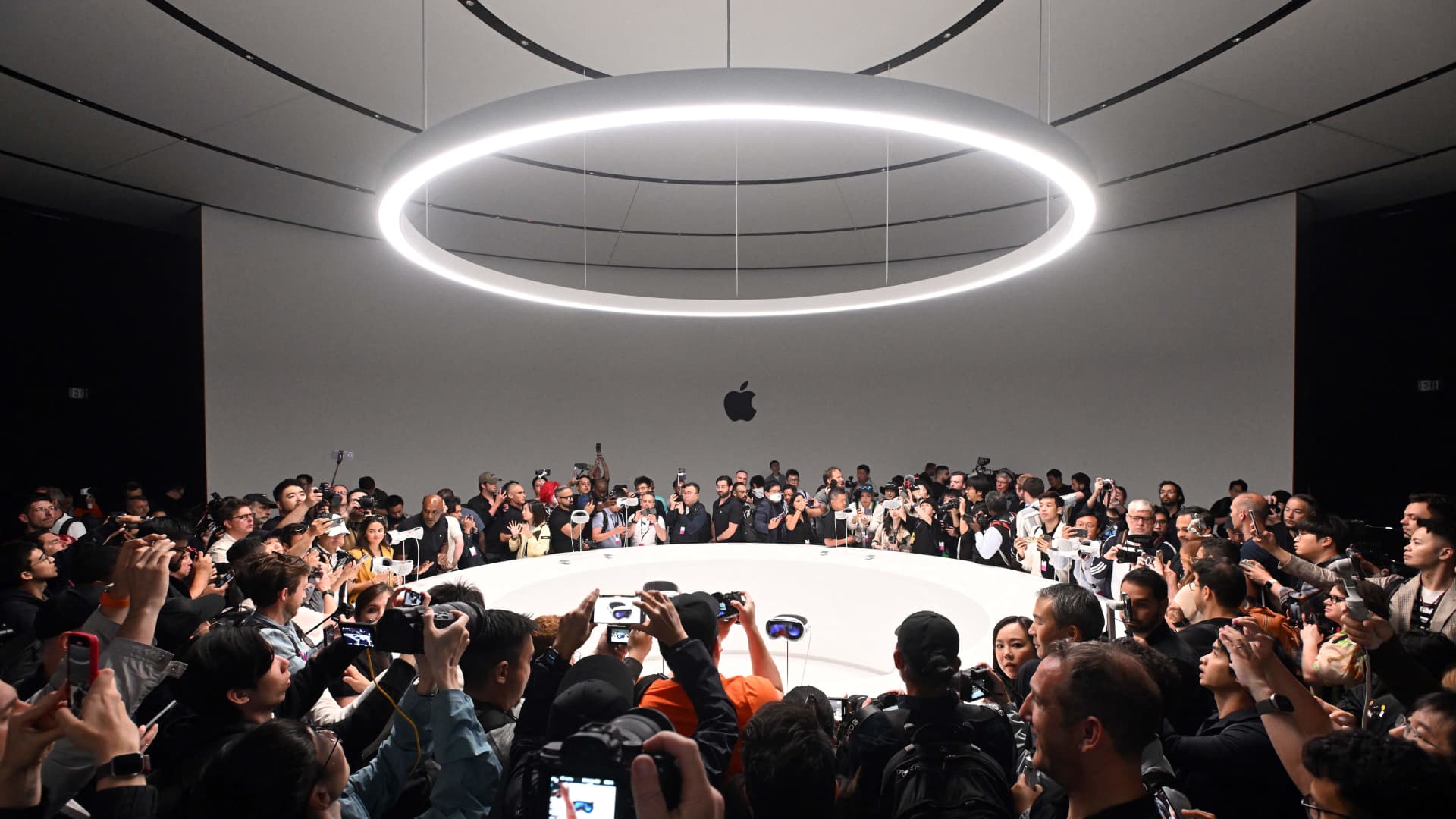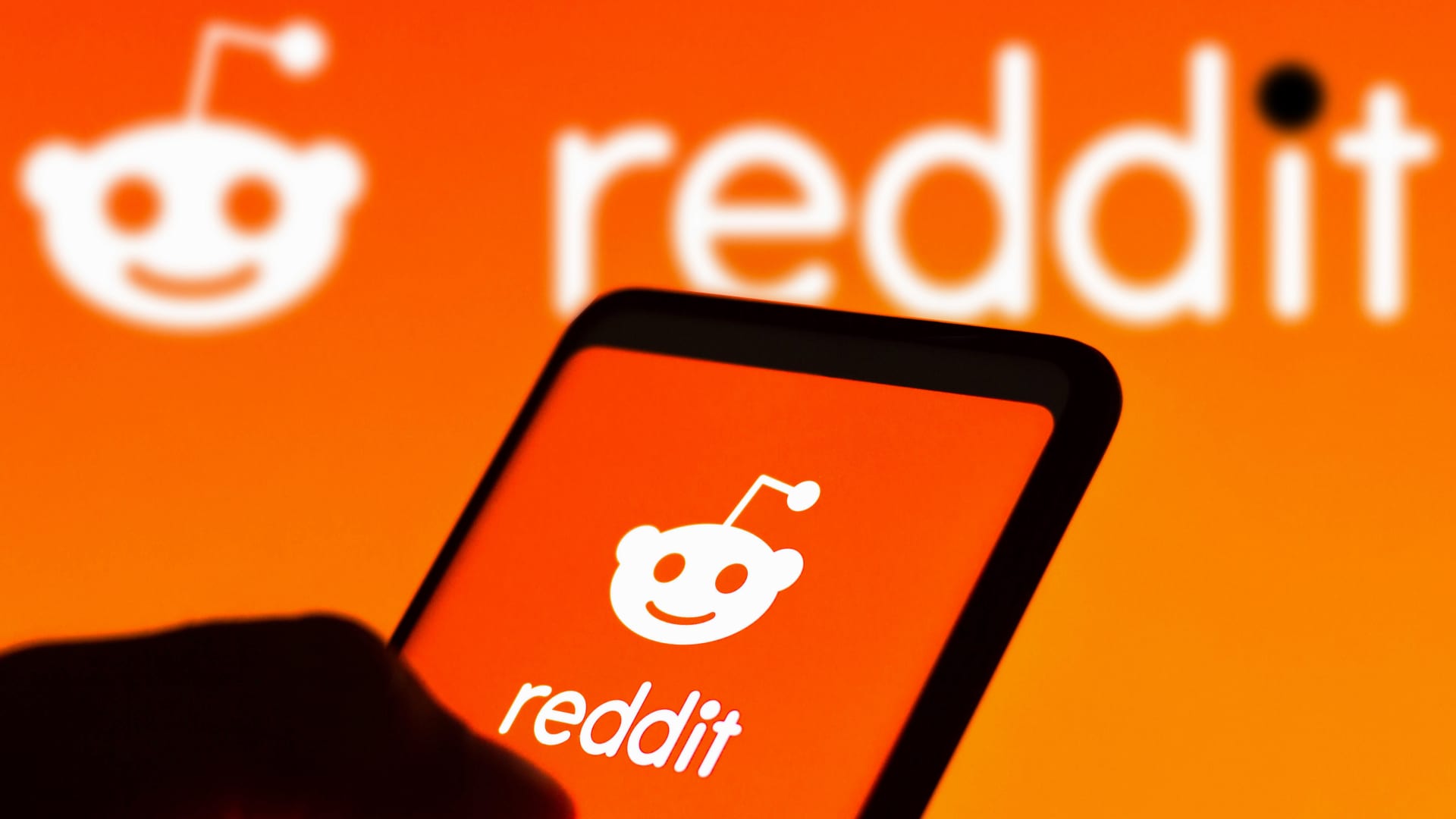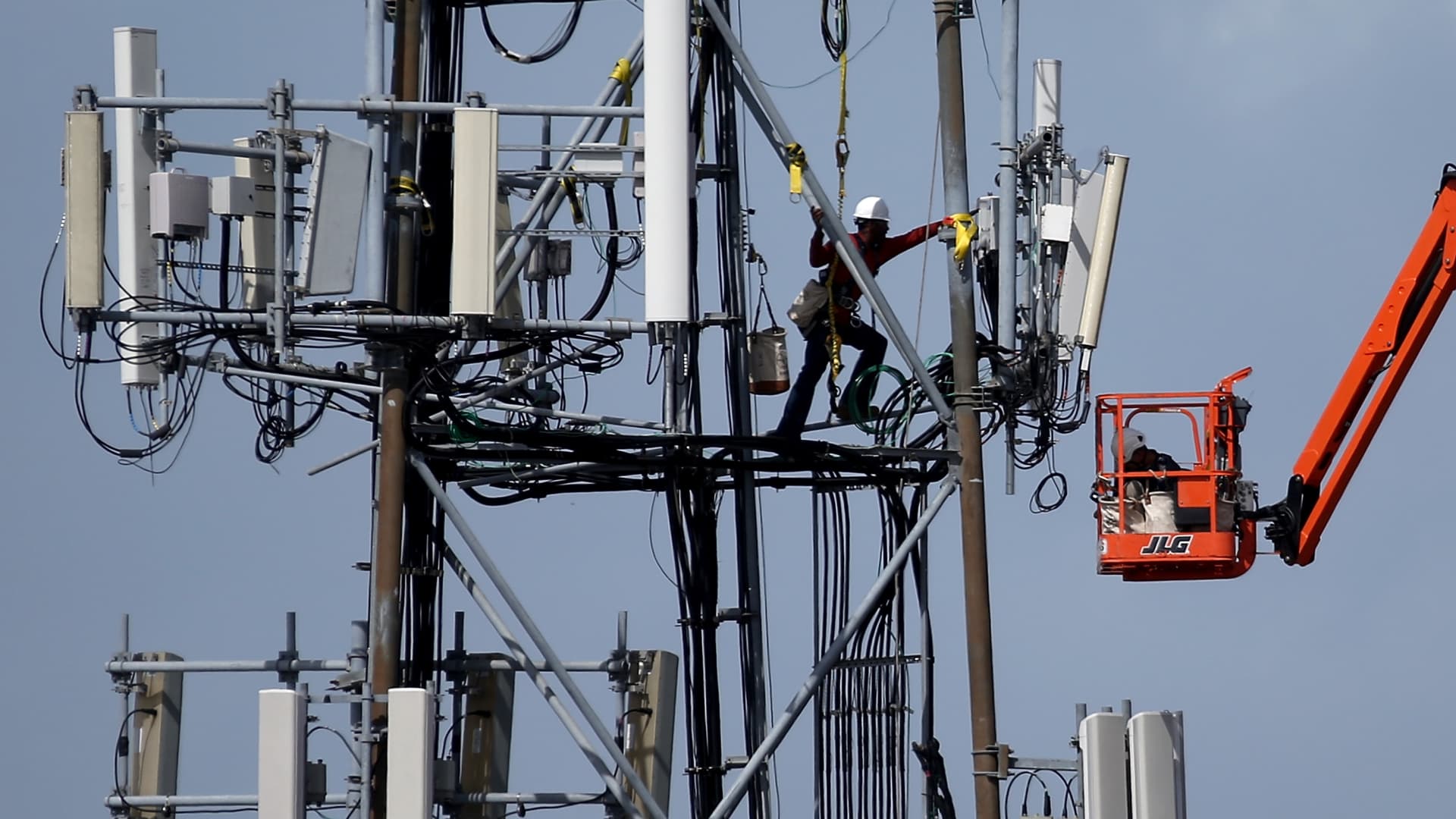
Since 2015, Apple has acquired more than two dozen artificial intelligence companies. They’re hardly household names, among them Emotient, Laserlike, Drive.ai, AI.Music and WaveOne. But Apple engineers have embedded the procured technologies into the company’s continuously upgraded smartphones, computers and watches, streaming music and television services, operating systems, and myriad mobile applications, as well as the Vision Pro mixed-reality headset, scheduled for release next year.
Cupertino-based Apple doesn’t talk publicly about AI acquisitions and has generally been tight-lipped about its overall strategy in the space, including its longstanding internal R&D in AI, even as big tech competitors — Microsoft, Google, Meta and Amazon — are loquacious in promoting their generative AI chatbots and large language model (LLM) platforms.
“That’s the DNA of Cook and Cupertino. They tend not to talk until they release,” said Wedbush Securities analyst Dan Ives.
Publicity is not the only difference to glean from Apple’s AI approach to date and the future impact on its consumer-centric business model.
While its rivals are focused on building stand-alone generative AI models, Apple has targeted machine learning infrastructure.
“Apple looks at acquisitions of leading teams of talent in each domain that can bring the machine-learning techniques to particular consumer products,” said Brendan Burke, an emerging technology analyst at research firm PitchBook, which has tracked 30 AI acquisitions by Apple over the past eight years. “That’s led the acquisition strategy to focus on consumer applications of AI primarily, but also operational techniques for machine-learning deployment and edge devices, as well as limited bets on the future of deep learning and more horizontal technologies,” he said.
Apple, which is scheduled to report earnings Thursday, did not respond to requests for comment.
When Apple does talk about its AI ambitions, it is more circumspect, whether that was when CEO Tim Cook appeared on “Good Morning America,” or in an earnings report call with analysts and investors in August. On that call, Cook said, “We view AI and machine learning as core, fundamental technologies that are integral to virtually every product that we build. And, of course, we’ve been doing research across a wide range of AI technologies, including generative AI, for years,” he said. “We’re going to continue investing, innovating and responsibly advancing our products with these technologies, with the goal of enriching people’s lives. We tend to announce things as they come to market, and that’s our MO, and I’d like to stick to that.”
To that point, the latest iPhone and Watch models showcase Apple’s AI prowess. The iPhone 15 features several AI technologies, such as personal voice, which lets users synthesize a voice like their own so they can speak words they type in FaceTime and phone calls, and live voicemail, a real-time transcription of messages. The upgraded camera uses machine-learning AI to tell the difference between a person and an animal in the frame. The Apple Watch Series 9 and Ultra 2 incorporate AI into the double-tap feature to more easily perform tasks, a brighter display, smarter Siri and advanced health monitoring.
AI will also be built into Vision Pro, especially its integration with FaceTime, Apple said in announcing the headset, which it calls a spatial computer. Users will be able to create avatars of themselves via machine-learning techniques, allowing them to do things together like watch a movie, browse photos or collaborate on a presentation.
Still, the progress app by app and device by device has not protected Apple from criticism that it’s already late to the game.
Laura Martin, a tech analyst at Needham, is among those who say Apple is “far behind” its big tech rivals. “The future is generative AI and Apple isn’t doing that,” she said. Even so, Martin added, “I’m not sure it matters, because they have an ecosystem, an economic model” that is geared toward machine-learning. “Apple’s ecosystem is fine and will keep growing,” she said.
The early edge in generative AI is paying off for rivals, as was evidenced by Microsoft’s recent earnings report. But the one advantage Apple has that its tech rivals don’t: the world’s most monetized installed base, more than two billion users running its iOS operating software on devices.
That’s why bullish analysts don’t see the competition for Apple as being straight up against the generative AI platforms being pursued by Microsoft, Google and Amazon. Comparisons being made today to the first wave of cloud adoption – and generative AI ecosystems now being referred to by some as Cloud 2.0 – are a good place to look at why it may be less a race than parallel development process. Even as Amazon Web Services, Microsoft Azure, and to a lesser extent Google Cloud, gobbled up market share as more enterprises migrated to cloud-based computing, Apple made no play for that market.
“They wont look at AI from the outside looking in. They will be big player in AI even though the perception is they are late to the game,” Ives said. “We believe they are on the cusp of what will be the introduction of an AI App Store over the next year,” he said.
The billions being spent on AI
Last week, Bloomberg reported that in a race to “catch up” Apple would spend $1 billion a year on generative AI. Ives says he believes that’s a significant under-estimate of the amount Apple will spend, and already has been spending, on AI. He expects Apple to spend as much as $5 billion a year on AI and says it already has spent $10 billion on AI research & development in the past few years to create the foundation for developers to build AI apps – a level that would be comparable to Microsoft’s spending. “That’s the holy grail for them, the AI App Store. That’s where they can monetize in a historic way,” Ives said.
It’s a growth opportunity that would leverage what’s been one of the most important aspects of the Apple story in recent years, the growth of its services business, which is now a $100 billion revenue stream on its own. Within an AI App Store, the opportunities can range far beyond core Apple offerings like Music, to a wide variety of health and fitness apps, for example, and in the end offer an additional $5 billion to $10 billion a year in services revenue, by Ives’ count.
Cook’s single mention of generative AI to analysts helped fuel speculation as to just what Apple will — or won’t — do in that highly competitive field, led by Microsoft’s involvement with OpenAI and ChatGPT and its own Bing AI chatbot, Google’s Bard bot and Meta’s LLM-based virtual assistant, Meta AI.
In July, Bloomberg reported that Apple was working on AI tools to challenge those bots with its own LLM, dubbed Ajax, and has created a chatbot, Apple GPT, for internal use.
In August, the Financial Times reported that Apple was “bulking up its expertise in generative AI” by hiring dozens of people in California, Seattle, Paris and Beijing to work on LLMs. In fact, Apple’s careers website invites job-seekers to “join a team of researchers and engineers with a proven track record in a variety of machine learning methods,” including generative AI models.
There is a downside to its ecosystem, however, which adheres to data privacy and design excellence, and might be an obstacle for whatever Apple does in generative AI, Burke said, or in the least, explain why it may debut at a slower pace. “Apple only wants to release products that are safe, privacy-focused and meet internal quality standards, so that limits their speed of deployment,” he said. “So I think Apple will wait to release any platform technologies until they are really additive to its ecosystem.”
In the meantime, Burke said, it is reasonable to assume that Apple will continue to invest in AI, either with more acquisitions of startups or partnerships with developers, and deals being struck by competitors won’t go unnoticed. Referring to Amazon’s recent $4-billion investment in Anthropic, a startup that’s launched an AI chatbot called Claude 2, he said, “Apple could feel similar pressure to work with leading startups to supplement its internal R&D efforts,” he said. “Particularly as startups continue to achieve state-of-the-art results with LLMs and incorporate new image- and video-based features that could be relevant to Apple. That could be a valid complement to what it’s doing.”







